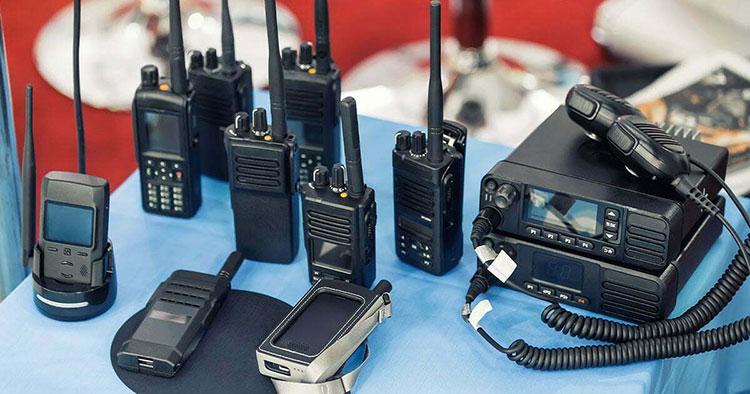There are two main types of walkie-talkies: analog and digital, each with distinct differences.
Analog Walkie-Talkies:
Analog walkie-talkies, often referred to as traditional analog walkie-talkies, use analog voice communication. These devices rely on continuous waveforms to transmit voice, signaling, and signals without any digital technology within the system. They are characterized by mature technology, well-established systems, and relatively lower costs.
Digital Walkie-Talkies:
Digital walkie-talkies, designed with digital technology, digitize voice signals and transmit them in a digital encoded format. This means that all modulation on the radio transmission frequencies is done digitally. Digital walkie-talkies offer advantages such as enhanced spectrum efficiency, improved voice quality, and more comprehensive integration of voice and data.

Comparison of Interfacing Analog and Digital Walkie-Talkies:
Analog:
Analog walkie-talkies often necessitate the establishment of independent network systems with custom wiring. The lack of industry standards may result in incompatibility issues among products from different manufacturers.
Digital:
Digital walkie-talkies utilize a TCP/IP approach, enabling them to leverage small-area broadband networks. Multiple low-voltage electronic systems can share the same broadband network, reducing network setup costs. They employ standard interfaces, enhancing equipment practicality, and achieving uniformity in community management platforms.
Comparison of Video Transmission between Analog and Digital Walkie-Talkies:
Analog Walkie-Talkies:
In the context of community video networking, analog walkie-talkies may be limited in ensuring image quality when the distance exceeds 1 kilometer.
Digital Walkie-Talkies:
Digital visual walkie-talkies operate on a TCP/IP network protocol, facilitating data sharing across networks. They employ cutting-edge algorithms and decoding technologies for video compression and extraction. Even at extended distances, digital walkie-talkies maintain clear image quality.
Comparison of Communication Quality between Analog and Digital Walkie-Talkies:
Analog Walkie-Talkies:
Analog walkie-talkies operate on a bus-based system and use half-duplex communication. When one door station calls the management center, it may lead to occupied lines, preventing other wall-mounted stations or sub-management units from simultaneous communication.
Digital Walkie-Talkies:
Due to their integration with broadband networks and the presence of a switch at the center, digital walkie-talkies employ full-duplex communication. This enables multi-channel real-time data exchange, ensuring efficient and uninterrupted communication without line occupation.
Comparison of Installation and Commissioning between Analog and Digital Walkie-Talkies:
Analog Walkie-Talkies:
Analog walkie-talkie systems involve numerous network devices such as network switches, interlayer isolators, signal amplifiers, etc. When any of these devices malfunction, it increases the commissioning workload. Furthermore, these intermediary devices are typically only provided by manufacturers, making replacement dependent on the supplier.
Digital Walkie-Talkies:
Digital walkie-talkie systems utilize standard TCP/IP protocols, eliminating the need for various switches and intermediary devices in the system. This simplifies the commissioning process and makes device configuration and replacement more straightforward.

